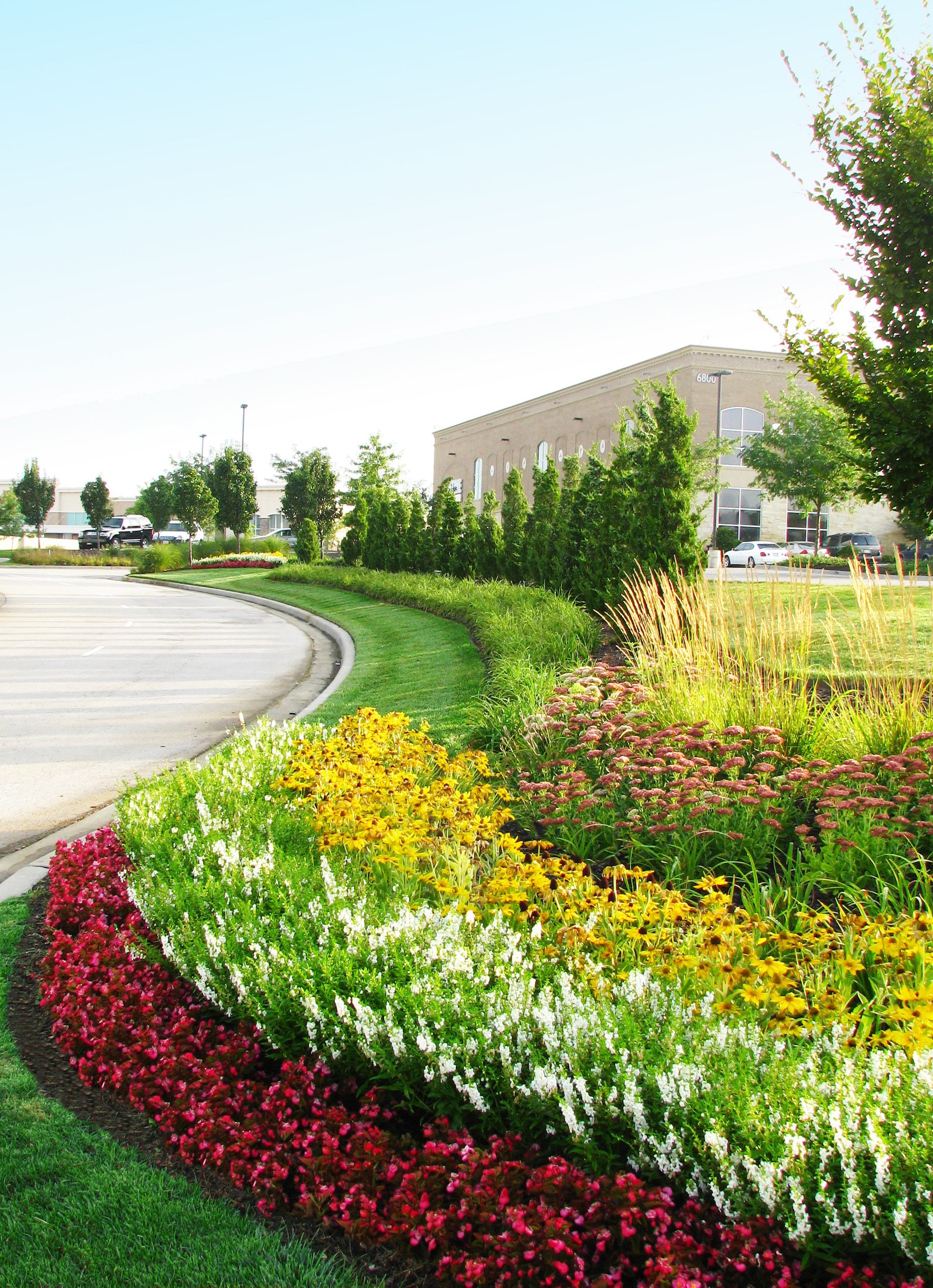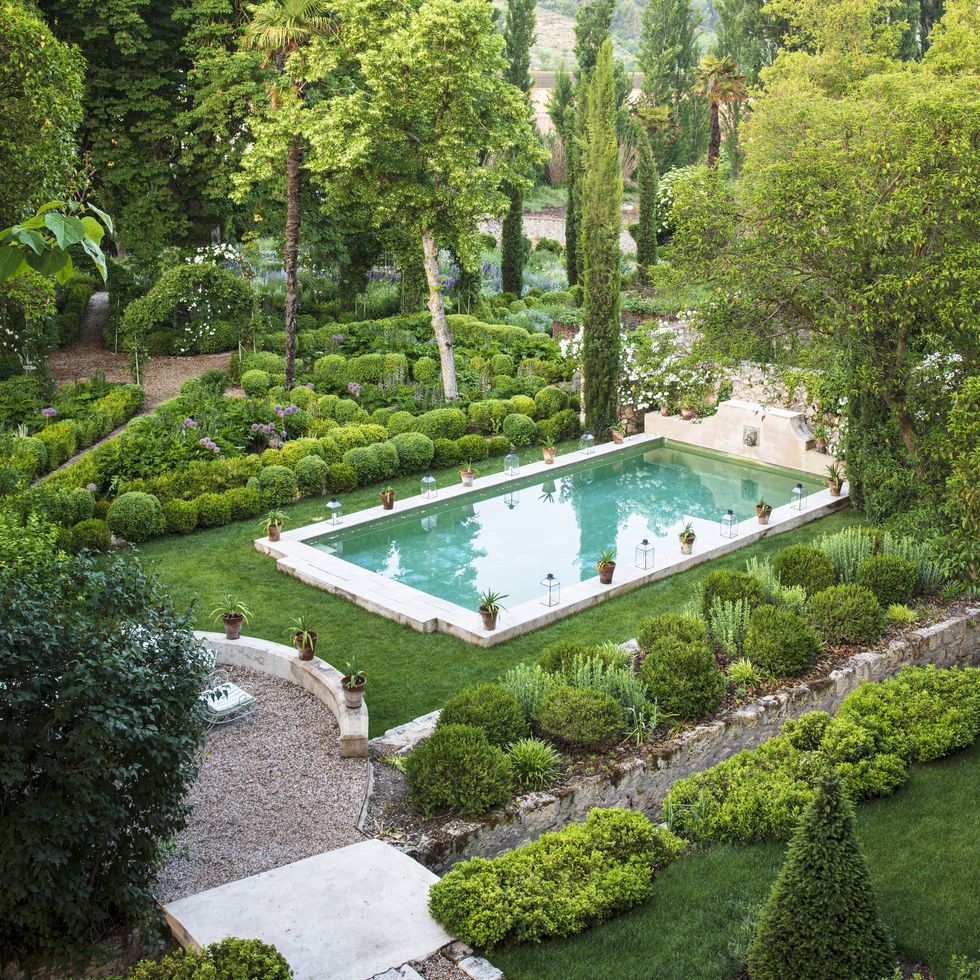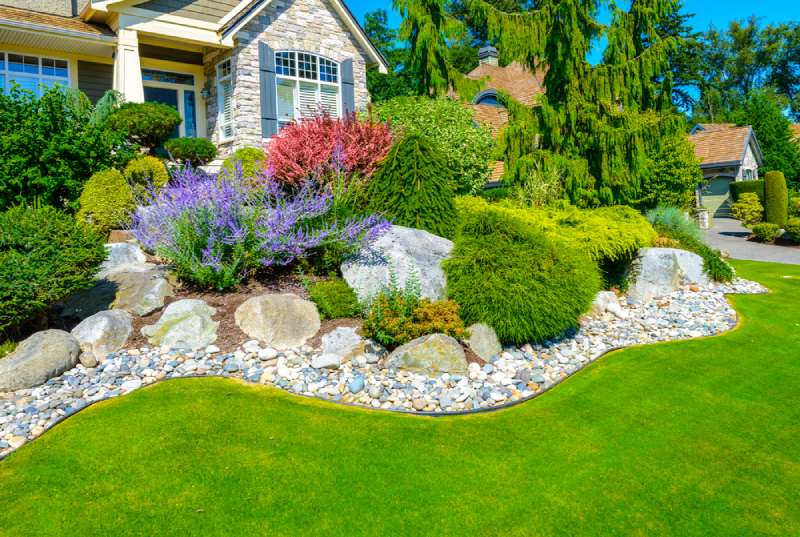Elevate Your Building's Visual With Sustainable Landscaping Layouts and Eco-Friendly Practices

Benefits of Sustainable Landscape Design
Carrying out sustainable landscape design methods not only preserves natural sources however also advertises biodiversity and enhances total environmental health. One substantial advantage is the decrease of water usage via the use of drought-resistant plants, rainfall gardens, and reliable irrigation systems.
Furthermore, sustainable landscape design can enhance dirt health and wellness by minimizing the usage of chemical fertilizers and chemicals, thus developing a healthier setting for plant growth and helpful soil microorganisms. This, subsequently, improves the total resilience of the landscape to stand up to environmental stressors and environment change effects - landscaping companies Jacksonville. In addition, lasting landscape design techniques can attract diverse wild animals, consisting of pollinators like butterflies and bees, cultivating an extra dynamic and balanced community within the residential property
Incorporating Native Plants
To build on the benefits of sustainable landscaping, a tactical concentrate on integrating native plants can even more improve environmental durability and promote biodiversity within the landscape. Native plants are species that naturally occur in a particular location and have actually advanced to grow in the neighborhood environment, dirt conditions, and community. By including indigenous plants in landscape design styles, residential property proprietors can decrease water usage, minimize the demand for chemical pesticides and plant foods, and sustain the regional wildlife populace.
Integrating native plants likewise helps in maintaining the one-of-a-kind personality and identity of a region's flora. These plants frequently require less upkeep as soon as developed, making them a sustainable and cost-effective landscaping remedy in the lengthy run. Furthermore, native plants can bring in native pollinators like butterflies and , contributing to the overall wellness of the environment.
When choosing indigenous plants for landscaping tasks, it is vital to choose varieties that are appropriate to the specific ecological conditions of the website. Consulting with local baby rooms or herb yards can provide beneficial assistance on picking the best indigenous plants for a specific area. By incorporating indigenous plants into landscape design designs, homeowner can develop stunning, lasting outdoor areas that profit both the atmosphere and the area.

Water Conservation Techniques
Reliable watering techniques play a vital function in sustainable landscaping techniques, making sure ideal water conservation efforts in exterior rooms. Carrying out methods such as drip irrigation, rain harvesting, and clever watering systems can substantially minimize water waste while maintaining a healthy landscape. Trickle watering provides water directly to the origins of plants, lessening evaporation and drainage. Rain harvesting entails gathering rainwater from roofings and keeping it for later usage in irrigation, reducing the dependence on community water sources. Smart watering systems use climate data and dirt wetness degrees to change sprinkling routines, preventing overwatering and advertising water efficiency.
In enhancement to advanced watering approaches, xeriscaping is another water-saving landscape design strategy that concentrates on utilizing drought-resistant plants, compost, and efficient irrigation to produce a low-water landscape layout - landscaping contractor Jacksonville. By selecting indigenous plants that are well-suited to the local climate and dirt problems, residential or commercial property owners can minimize the demand for excessive watering, ultimately preserving water and advertising a lasting exterior setting
Eco-Friendly Hardscaping Concepts
Enhancing exterior spaces with environment-friendly hardscaping attributes can add significantly to sustainable landscaping practices. When thinking about hardscaping aspects, select products like recovered timber, recycled concrete, or natural stone to lessen ecological effect. These products not just include a special visual charm to your outside space but also lower the demand for brand-new sources extraction.
Executing permeable paving alternatives such as crushed rock or permeable concrete can assist decrease water runoff and advertise groundwater recharge. These choices enable rainwater to seep right into the ground, protecting against disintegration and lessening the concern on stormwater systems.
Integrating indigenous plants into hardscaping layouts can better improve eco-friendliness by supporting neighborhood wildlife and reducing the demand for extreme watering or chemical treatments. By incorporating vertical yards or green wall surfaces, you can introduce more plants into metropolitan setups, enhancing air quality and biodiversity.
Integrating energy-efficient lighting, such as solar-powered LEDs, right into hardscaping layouts can decrease electricity usage and reduced your building's carbon footprint. Focusing on environmentally friendly hardscaping concepts not only improves the elegance of your outdoor area but likewise shows a commitment to environmental stewardship.
Upkeep Tips for Lasting Landscapes

Consistently prune plants to advertise healthy and balanced growth and stop overgrowth that can lead to pest diseases or invasions. Usage natural fertilizers to nourish the dirt and plants without harmful chemicals that can leach right into the setting. For hardscaping elements, such as permeable pavers or rock paths, consistently clean them to avoid particles buildup and maintain their performance. By remaining aggressive with maintenance tasks, you can protect the elegance and sustainability of your landscape for years to find.
Verdict
To conclude, lasting landscape design practices offer numerous benefits for homeowner, from boosting the visual allure of the environments to visit this website advertising ecological preservation. By integrating native plants, carrying out water preservation methods, and using environment-friendly hardscaping ideas, homeowner can create gorgeous landscapes that are also environmentally liable. With correct upkeep, sustainable landscapes can flourish and contribute to a much healthier community for both humans and wildlife.
In addition, lasting landscaping can boost dirt health and wellness by reducing the use of chemical plant foods and chemicals, consequently producing a healthier atmosphere for plant growth and valuable soil organisms.To construct upon the benefits of sustainable landscape design, a tactical emphasis on integrating native plants can better improve eco-friendly strength and promote biodiversity within the landscape. By consisting of native plants in landscape design styles, residential or commercial property proprietors can decrease water use, reduce the demand for chemical pesticides anchor and fertilizers, and sustain the regional wild animals population.
These plants usually need much less maintenance when established, making them a sustainable and cost-efficient landscaping remedy in the long run. By incorporating native plants into landscape design designs, residential property owners can produce attractive, sustainable outside rooms that benefit both the atmosphere and the area.